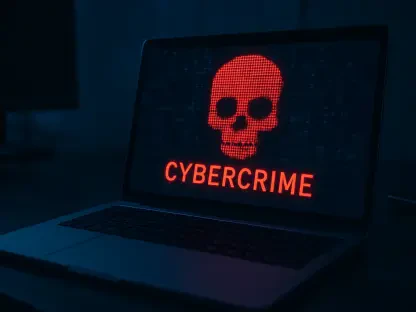Listen to the Article
The cybersecurity world is constantly changing, creating tough challenges for Chief Information Security Officers (CISOs). Because of this, many are rethinking their strategies and adopting a more proactive approach to security.
The need to strengthen the human element remains top-of-mind for decision-makers, and rightly so—since 91% of cyberattacks begin with spear phishing emails.
Moreover, traditional attacks (such as ransomware) persist. Security Intelligence’s report revealed that 73 active ransomware groups have been tracked on the dark web since mid-2024, a 56% increase from last year’s initiatives when 46 groups were tracked.
Not only that, but, according to 94% of surveyed CISOs, many are stressed at work. As a result, your innovative peers are broadening their capabilities by:
Using AI to find and fix problems quickly
Verifying identity with a Zero Trust approach
Making compliance easier to improve operations
Helping workers develop important cybersecurity skills
Protecting your cloud(s) with new tools
As a CISO, you doubtlessly understand the importance of equipping your business with the tools necessary for resilience. This article will help inform your initial efforts, shedding light on the top cybersecurity concerns impacting businesses.
Dive in to explore how you can prepare your organization for resilience in 2025 and beyond.
AI in Cybersecurity: Boon or Bane?
AI and ML are transforming how companies find and stop cyber threats.
These technologies enable security teams to spot patterns seamlessly, predict risks, and act quickly, giving them an edge in a fast-moving, ever-complex cyber landscape.
However, attackers are catching on too.
Adversaries are increasingly using AI to create smarter, harder-to-detect attacks, like convincing phishing emails or ways to get past older defenses. That’s why it’s essential to have robust, AI-powered systems that can match and beat these threats.
Forward-thinking CISOs are also leveraging tools like predictive analytics to detect anomalies and confidently predict risks before they happen. By flagging anything unusual on your network with automated responses, you’ll stop threats quickly and limit damage.
The focus is on nurturing resilience and moving from reacting to problems to staying ahead of them.
The Value of Zero Trust
Today, security executives across industries strive to move beyond basic security operations.
Since the ‘death of the traditional perimeter,’ shifting to Zero Trust principles has become essential for enterprises.
Zero Trust is based on a few important principles that work together to keep systems secure.
One of these principles is continuous verification. In a Zero Trust model, every access request is checked, no matter where the user is or what device they are using. This ensures that no one is trusted automatically based on their location or previous access.
Additionally, strong multifactor authentication (MFA) and regular checks of device security help with this process.
Another key part of Zero Trust is least privilege access. This means giving users and systems only the minimum access they need to do their jobs. By limiting access, the system reduces the chance of damage in case of a breach and keeps sensitive information safer.
Micro-segmentation is also an essential tenet of Zero Trust. It requires dividing the network into smaller sections, each with its own rules for access. This stops attackers from moving easily within the system if they break into one part of it.
Finally, Zero Trust focuses on protecting data. It makes sure that sensitive information is encrypted, labeled, and only accessible to those who need it.
Simplifying Compliance
Identifying important regulations like PCI DSS, SOX, and GDPR is key for compliance.
These rules help security professionals handle and protect data. Cybersecurity compliance is important to avoid fines. Following these rules helps keep your systems secure and reduce risks.
The following table discusses key best practices to focus on:
In addition, AI creates new compliance challenges. As companies use AI in the cloud, they must make sure these systems follow rules that weren’t made for AI.
As you plan for 2025, focus on building flexible compliance frameworks that can adapt without major overhauls. Start by designing security systems that separate core principles from specific details. When your basic security isn’t tied to any one technology—it’s easier to adjust to new cloud services and changing threats.
Make Employees Cyber-Aware
When employees know the right practices and the risks, they become the first line of defense, catching threats before they become problems.
With phishing attacks being one of the most common ways hackers get into systems, helping employees understand the bigger picture of cybersecurity is essential for resilience.
By training employees to recognize phishing emails, suspicious links, and harmful attachments, CISOs can reduce the chances of an attack happening. Ongoing learning and awareness make the organization stronger and better equipped to fight cyber threats. However, traditional awareness training isn’t enough to protect your organization.
Email filters have proven to fail 7-10% of the time. Your human firewall needs to be strong, as it’s the last line of defense. Innovative vendors such as KnowBe4 help improve security through simulated phishing attacks with customizable templates. They also provide access to a wide range of up-to-date training content.
Your fellow professionals are leveraging AI-driven recommendations to help tailor training and phishing tests based on each user’s history, making learning more effective. CISOs must also use assessments to measure users’ security knowledge and attitudes.
This approach will help you engage employees in security awareness and build a stronger defense against threats.
Safeguard Your Cloud(s)
Organizations using cloud services usually seek improved efficiency and simplified processes. On the financial side, many businesses get a return on investment within a year. Additionally, cloud services can grow with your business, helping you stay competitive and adapt to changes in the market.Moving to the cloud means you need a strong, layered approach to secure your digital assets. When setting up a multi-cloud environment, it’s important to manage storage across different cloud providers. Make sure sensitive data is stored securely, using tools to prevent data loss and protect important information.
CISOs should also pick a framework that supports different authentication methods from each provider. This helps centralize role, policy, and account management, so engineers can work efficiently across clouds.
Automating updates is equally important, but each cloud provider has unique needs. Customize updates to match your workloads, infrastructure, and dependencies to keep things stable and secure.
Stay aware of what’s happening across your system by diligently monitoring all your cloud providers, this will help you quickly spot and respond to emerging concerns.
Conclusion
As CISOs plan for 2025, the cybersecurity landscape keeps changing, requiring strategies that are proactive and flexible.
By using AI and machine learning, following Zero Trust principles, simplifying compliance, and focusing on employee training, organizations can boost their defense against a growing number of threats. Securing cloud environments, keeping track of access and data, and staying ahead of new cyber risks will help businesses manage the challenges.
In the end, combining technology, people, and processes will be key to protecting organizations and ensuring long-term security in a more digital world.









